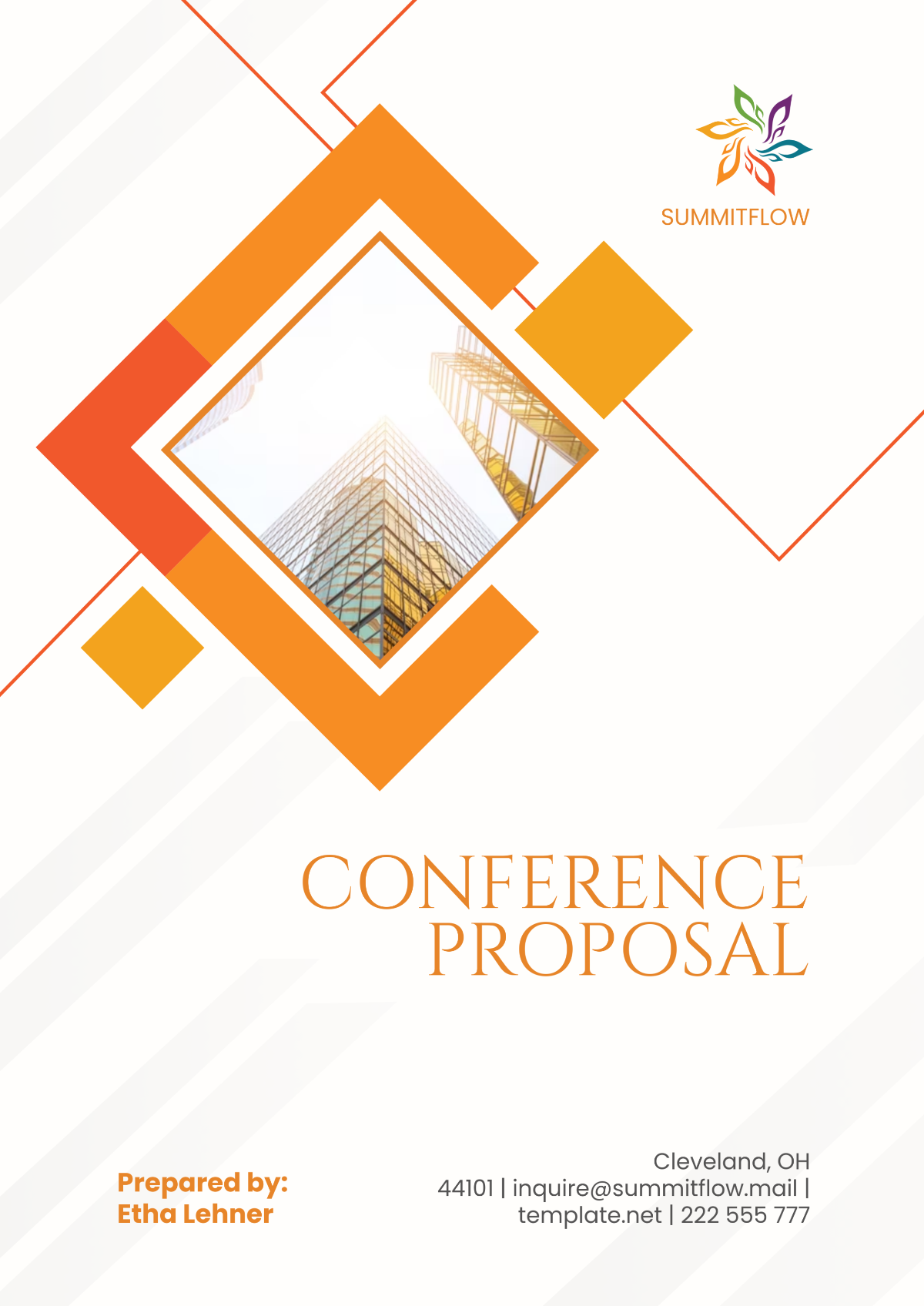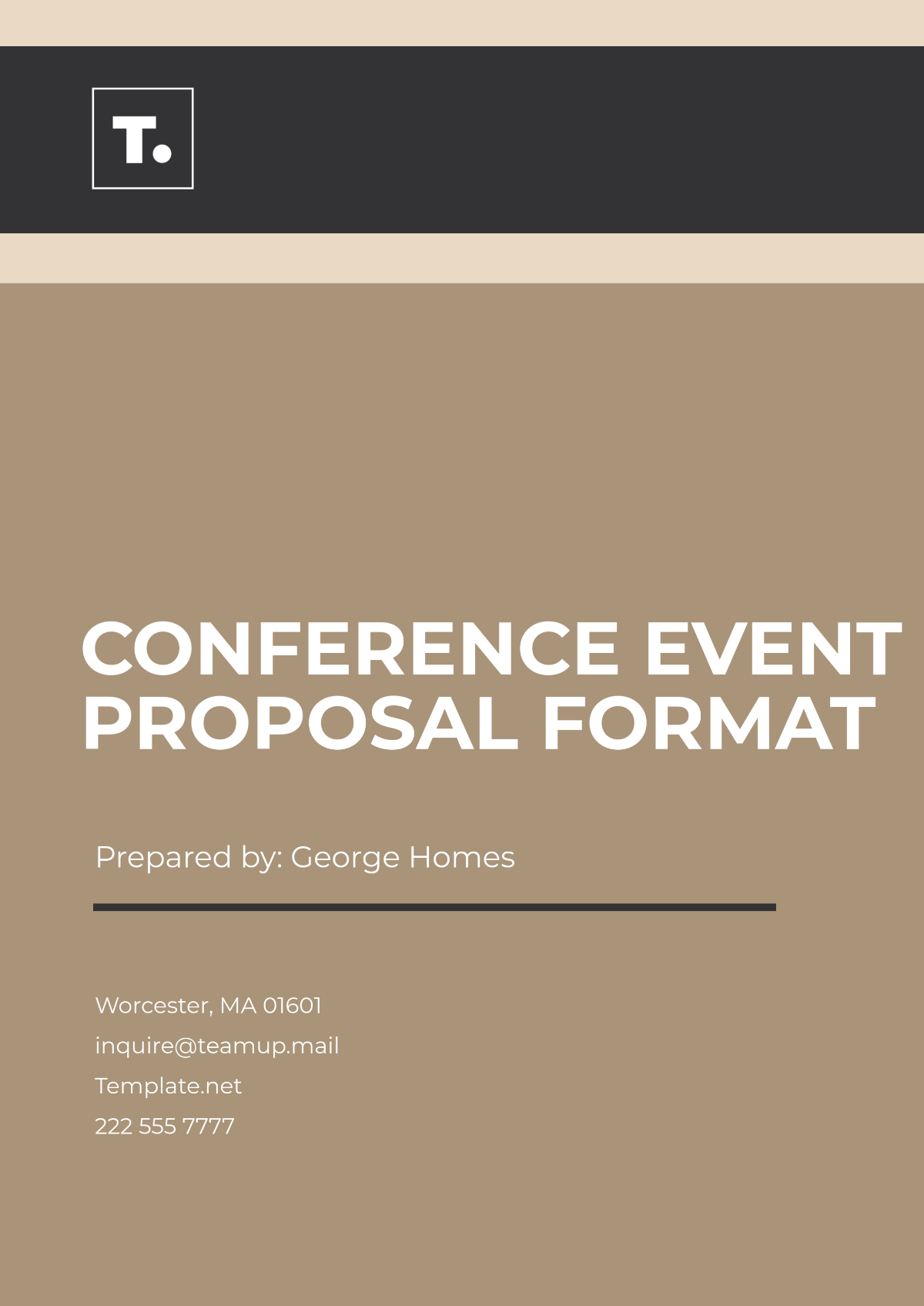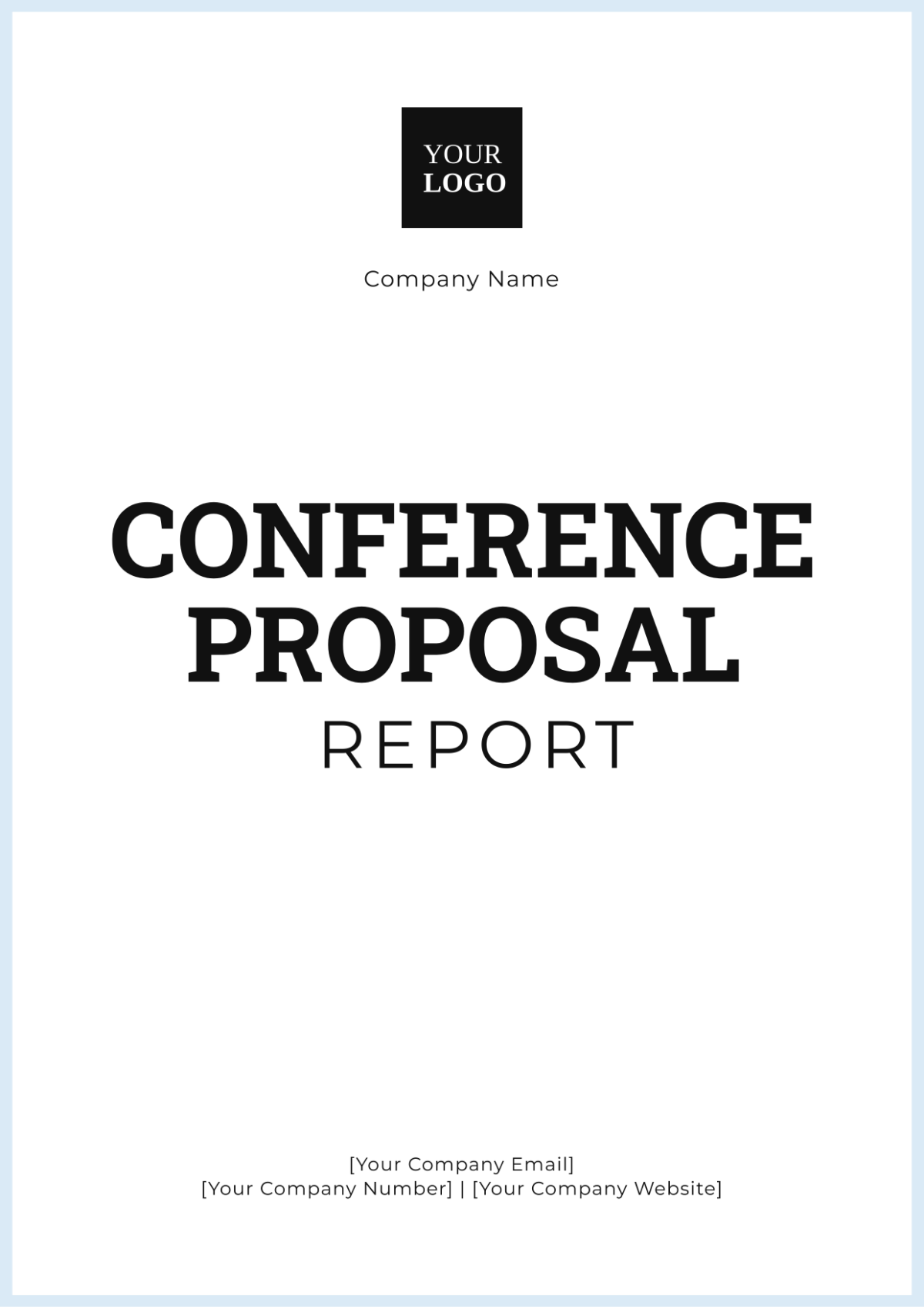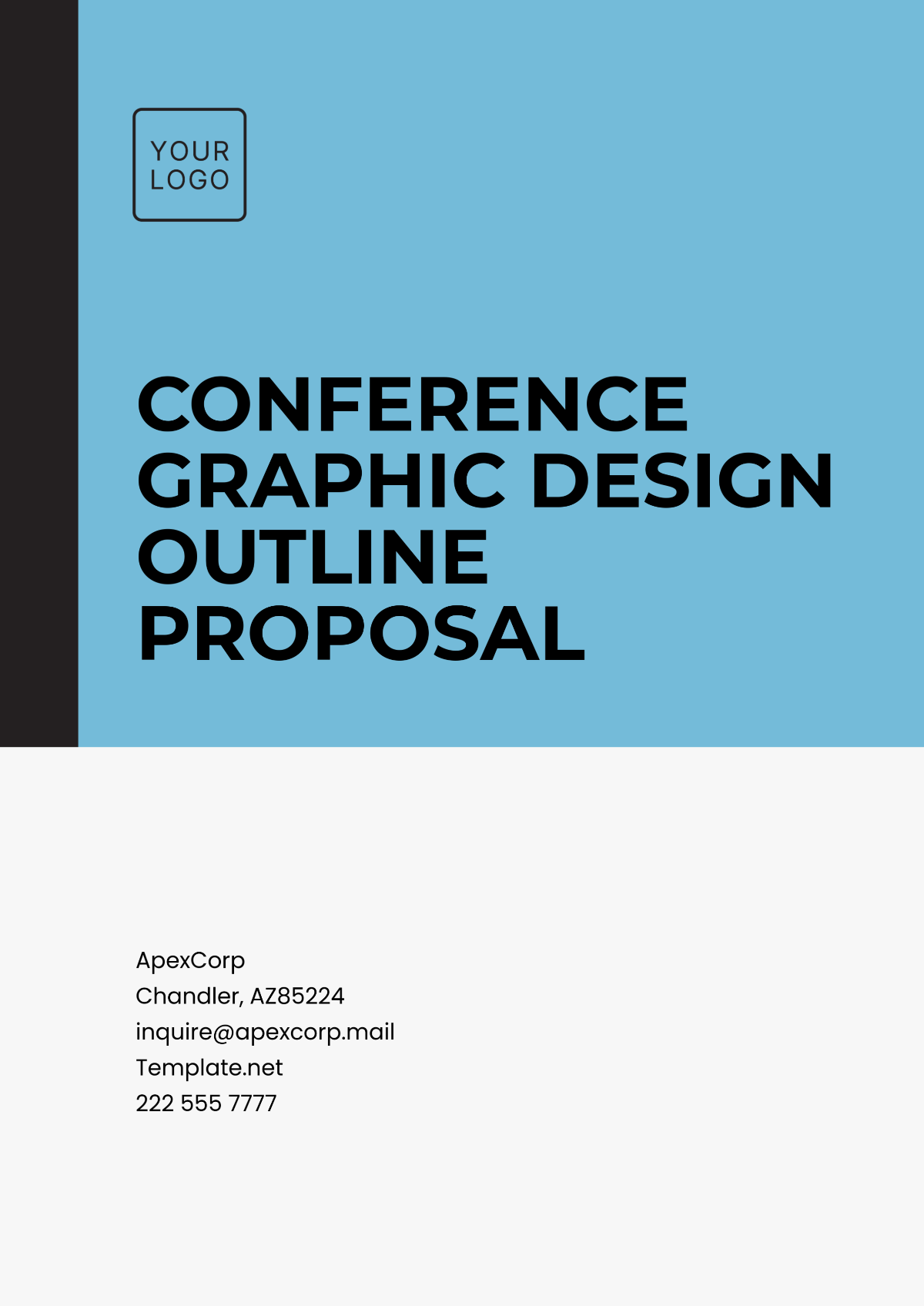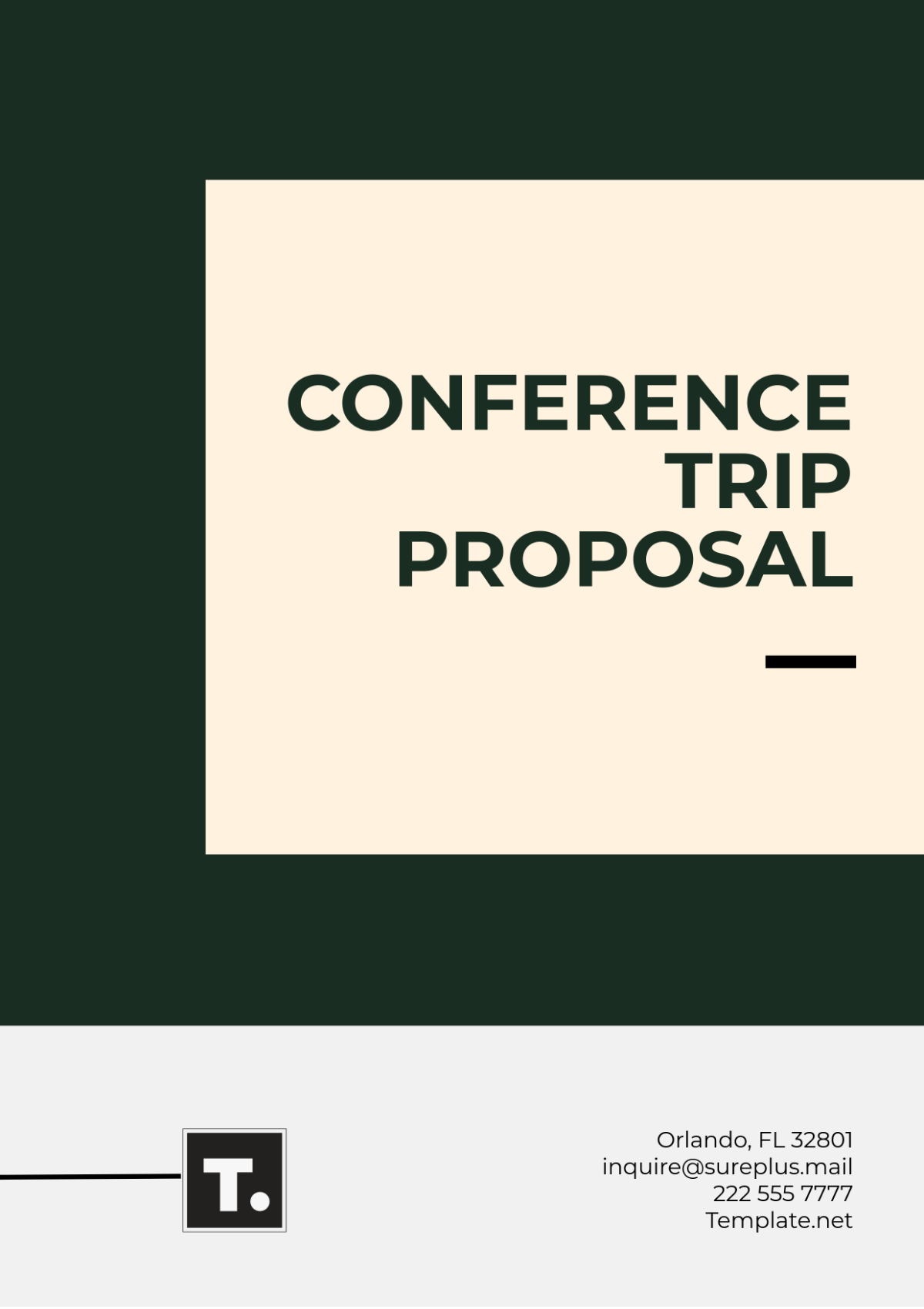Conference Event Proposal Format
Name: [Your Name]
Position/Title: Insert Position
Organization: [Your Company Name]
Date: Insert Date
1. Event Overview
Event Title: Name of the conference
Date(s) of Event: Date(s) of the event
Location: Venue, city, and state/country, with a link to the venue’s website if applicable
Event Format: Specify whether the event will be in-person, virtual, or hybrid
Target Audience: Describe the primary audience, such as industry professionals, academics, entrepreneurs, students, etc.
Event Purpose/Goal: Briefly describe the mission and vision of the event. For example, "To foster collaboration among experts in the field of [industry], provide a platform for knowledge sharing, and explore emerging trends and innovations in [subject]."
Theme/Focus: If applicable, outline the specific theme or focus of the conference (e.g., "The Future of Technology," "Sustainability in Business," etc.).
2. Conference Agenda
Key Sessions and Timing:
Opening Keynote: Speaker name, professional title, session topic – Time
Session 1: Topic, speaker, and time
Description: Brief overview of the session's contentSession 2: Topic, speaker, and time
Description: Brief overview of the session's contentLunch/Networking Break: Duration and opportunities for attendee interaction
Session 3: Topic, speaker, and time
Description: Brief overview of the session's content
Closing Remarks/Panel Discussion: Panelists' names and topics – Time
Note: Additional sessions or networking events may be added depending on the length of the event.
3. Event Content and Structure
Themes/Topics Covered:
List out the core themes of the event, and expand on what each will entail. For example, "Exploring digital transformation in the healthcare industry," "Sustainable business practices," and "Data-driven decision-making in global markets."Sessions & Workshops:
Provide an overview of key workshops, breakout sessions, or hands-on demonstrations that will provide value to attendees. Mention the format and outcomes expected from each session.Speakers & Presenters:
List the names and titles of confirmed or proposed speakers, along with their professional backgrounds and the topics they will cover. Attach speaker bios if available. Mention any notable industry leaders or thought leaders involved.Panel Discussions:
Describe any planned panel discussions. Highlight diverse perspectives or controversial topics to attract attention.Interactive Elements:
Explain how the event will encourage attendee engagement, such as live Q&A sessions, audience voting/polling, workshops, or roundtable discussions.
4. Audience Engagement Strategy
Engagement Tools and Technology:
Detail the virtual tools or event apps being used to facilitate interaction among attendees, such as event networking platforms, virtual breakout rooms, or interactive polling features.Networking Opportunities:
List the ways attendees can connect, both virtually and in-person, including dedicated networking sessions, virtual meetups, or social events.Pre-Event Engagement:
Describe how you will engage attendees before the event begins, such as pre-event webinars, content sharing (e.g., articles or industry reports), or early registration perks.Post-Event Engagement:
Explain follow-up strategies, such as sending event recordings, attendee feedback surveys, or creating a digital network for ongoing collaboration.
5. Event Marketing and Promotion
Marketing Strategy:
Describe your multi-channel marketing approach, including email campaigns, social media promotions, press releases, influencer partnerships, and any paid advertising campaigns.Targeted Outreach:
Outline the methods used to reach your target audience, including industry-specific platforms, newsletters, or direct outreach to key stakeholders.Sponsorship and Partnerships:
Provide details on any sponsorship or partnership opportunities for the event, including different levels of sponsorship, associated benefits (e.g., logo placement, exhibitor booths, speaking opportunities), and how sponsors will be integrated into the event.Promotional Materials:
Specify the types of promotional materials you will develop, such as event flyers, brochures, or digital ads. Consider adding a section on a custom hashtag or dedicated event website.
6. Budget Estimate
Total Estimated Budget:
Provide the overall estimated budget for the event.Detailed Breakdown:
Venue Rental: Cost
Speaker Fees and Honorariums: Cost
Technology and Platforms (e.g., virtual platforms, AV setup): Cost
Marketing and Promotion: Cost
Catering/Refreshments: Cost
Event Materials (e.g., handouts, swag bags, signage): Cost
Staffing and Volunteers: Cost
Sponsorship Revenue/Other Funding:
List the expected funding sources, including sponsorships, ticket sales, and any other forms of revenue.
7. Expected Outcomes and Impact
Impact on the Industry/Field:
Describe the long-term impact you hope the event will have on the industry or community, such as advancing knowledge, fostering collaboration, or driving innovation.Success Metrics:
Define how success will be measured, such as attendee satisfaction, number of new partnerships formed, or increased knowledge sharing. Mention any key performance indicators (KPIs) to track success.Call to Action:
Encourage stakeholders to take action, such as approving the proposal, confirming sponsorship, or securing registration.
8. Next Steps
Approval Process:
Outline the necessary steps for approval of the proposal, including any deadlines for decisions.Event Planning Timeline:
Provide a timeline or Gantt chart showing key milestones, from event approval to final execution.
9. Additional Information (Optional)
Appendices:
Include any supplementary documents, such as speaker bios, venue layouts, or previous event reports.References or Case Studies:
If available, include success stories or testimonials from previous events.

